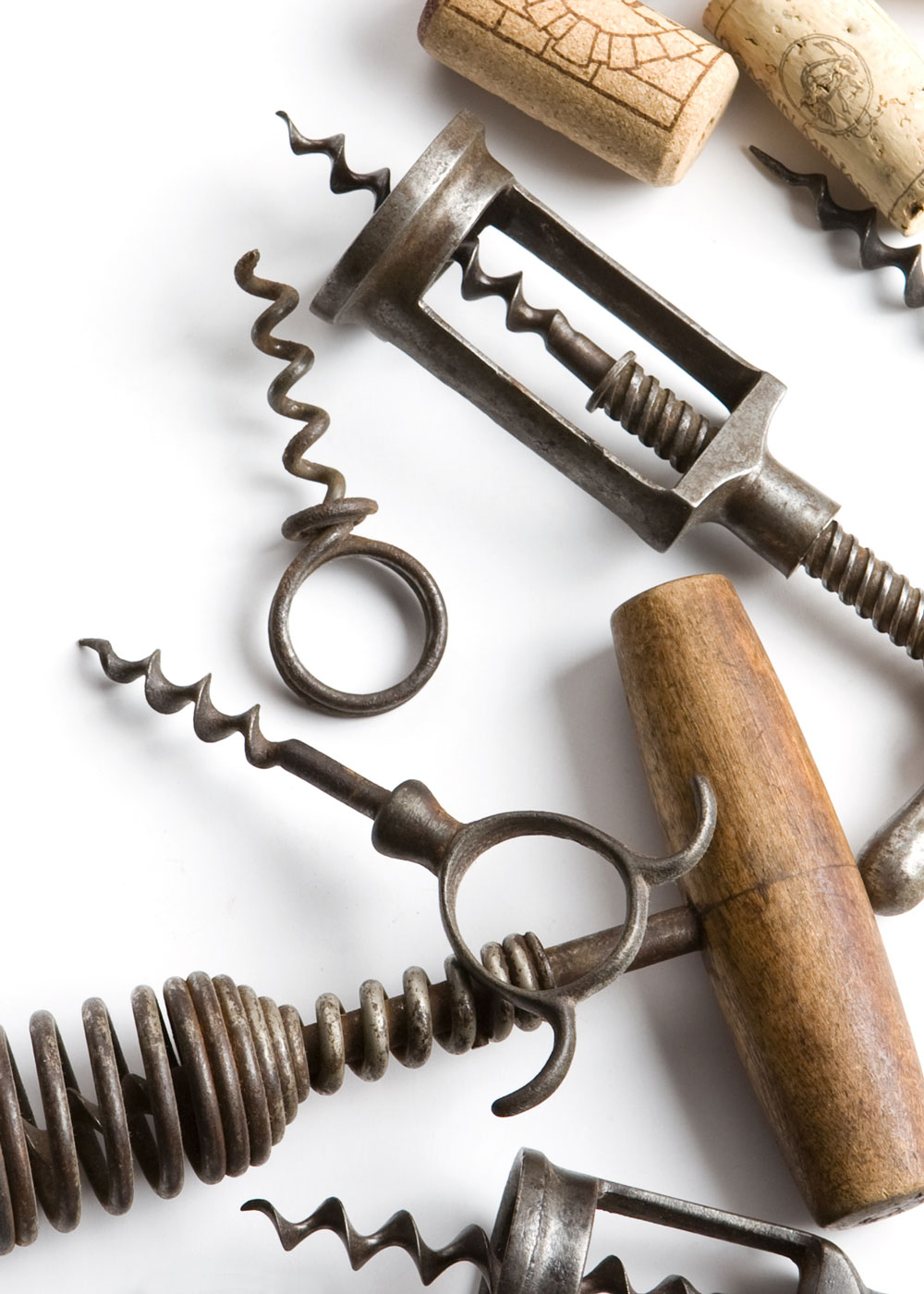No matter the wine you intend to drink, you have to open the bottle first – but which opener should you use? For the straightforward task of pulling a cork out of a bottle, the list of possible implements can seem excessive. This post will introduce a variety of the most popular wine openers and compare their relative advantages.

History
Prior to the seventeenth century, wines were either sold in barrels, ceramic vessels, or handmade bottles that were blown to individual sizes and shapes. Since each bottle’s neck had a different diameter, they had to be stopped with tapered corks that often protruded past the edge of the glass. These corks didn’t require a corkscrew to remove since they could be pulled out by hand. After the advent of standardized, industrially produced bottles, corks became cylindrical and more difficult to remove. A wide variety of corkscrews and other tools remain in service to the present day.
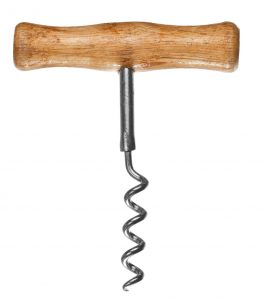
Basic “T-Style” Corkscrew
Among the simplest wine openers, a basic corkscrew requires more strength and leverage to use than other options, but it can be a satisfying experience to pull a cork out with nothing but pure elbow grease.
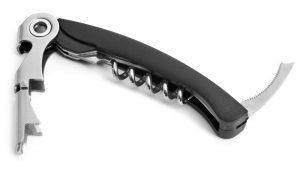
Hinged Waiters Corkscrew
Originally designed in Germany, this is the tool that seems to dominate in professional wine circles, perhaps due to its relatively low cost, small size, and durability. Its main drawback lies with the practice required to learn to use one. In my experience, a person who opens a half dozen or so bottles over the course of a few days to weeks will become very comfortable with it. Use the blade at one end of the tool to cut the foil away under the bottom lip of the bottle. Then, holding the bottle still with one hand, insert the corkscrew until one spiral is still showing. The cork is removed in two stages, using the hinged portion to push against the bottle and the handle of the corkscrew to pry up and pull on the cork.
Screwpull
Among the easiest wine openers to use, the screwpull was invented in 1979 and provides a straightforward and easy to learn experience. Simply insert the corkscrew with the guidance of a small frame. After inserting the screw, keep turning and the cork will come out of the bottle. It looks almost magical and makes a nice alternative to other openers.
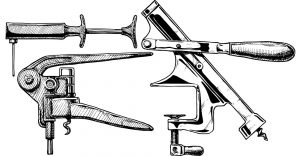
Lever Style
A wide variety of so-called “lever corkscrews” are on the market range from smaller plastic models to elaborate luxurious tabletop versions. They often hold the bottle still and make the cork removal very simple. Their size and cost can be considered a negative, unless you find them to double as a decoration.
Wing Corkscrew
The trusty wing-style corkscrew seems to be common throughout the country and is popular for its low cost and ease of use. I’ve found many examples to be satisfactory, but some models seem to be made from fragile materials and can break easily. Also, they have a tendency to pull the cork only partially out of the bottle, necessitating quite a lot of work to fully remove it. The advantages to these corkscrews are that they’re easy to find and to learn to use.
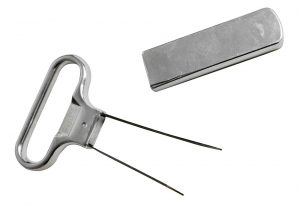
Osso
The osso is unique among wine openers because it doesn’t feature a corkscrew at all. Instead, it has two parallel tongs that are inserted around the cork and grip it so it can be pulled out. These wine openers are often kept on hand as a backup in case the cork is too dry or crumbly for a corkscrew. The osso keeps the cork intact and does very little damage. In fact, it’s nicknamed the “butler’s friend” because it allows the cork to be removed and put back without any visual indication of opening. Check out this previous post for more information on how to use the osso.
Now that you know a little more about wine openers and their relative strengths and weaknesses, you can try something new and see which works for you. Let us know what about your what works for you and why.

